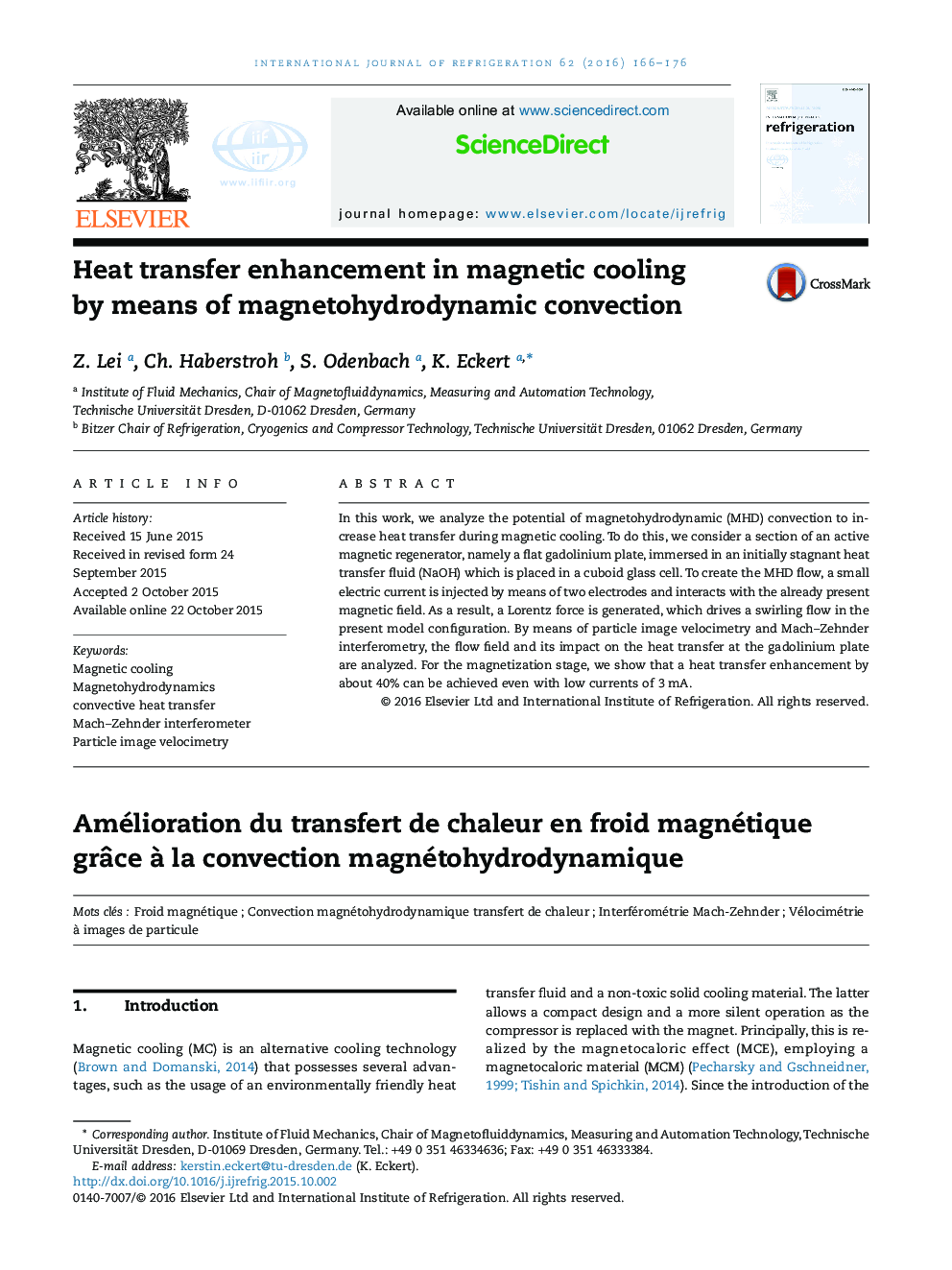| Article ID | Journal | Published Year | Pages | File Type |
|---|---|---|---|---|
| 790057 | International Journal of Refrigeration | 2016 | 11 Pages |
•A thin gadolinium plate, immersed into NaOH solution, is periodically magnetized.•A magnetohydrodynamic (MHD) convection is generated by electric current injection.•The MHD flow enhances the heat transfer by about 40% already for currents of 3 mA.•Analyses rest on Mach–Zehnder Interferometry and particle image velocimetry.•A heat transfer enhancement is also observed in the demagnetization phase.
In this work, we analyze the potential of magnetohydrodynamic (MHD) convection to increase heat transfer during magnetic cooling. To do this, we consider a section of an active magnetic regenerator, namely a flat gadolinium plate, immersed in an initially stagnant heat transfer fluid (NaOH) which is placed in a cuboid glass cell. To create the MHD flow, a small electric current is injected by means of two electrodes and interacts with the already present magnetic field. As a result, a Lorentz force is generated, which drives a swirling flow in the present model configuration. By means of particle image velocimetry and Mach–Zehnder interferometry, the flow field and its impact on the heat transfer at the gadolinium plate are analyzed. For the magnetization stage, we show that a heat transfer enhancement by about 40% can be achieved even with low currents of 3 mA.
